Hollywood A-lister Scarlett Johansson swears by it. So does tennis star Novak Djokovic and classical singer Katherine Jenkins. And it’s not just sports stars and celebrities that are addicted to the healing properties that manuka honey offers. Consumers are also hooked on this ‘liquid gold’ nectar that hails from New Zealand and can cost in excess of £30 a jar. They use it for a wide number of ailments, ranging from common colds to the treatment of open wounds.
For evidence of its growing popularity you only need look at recent sales figures. In 2000, the export market for manuka honey was worth a modest $11m, but last year it topped $170m, according to New Zealand honey supplier Airborne Honey. In the UK, its use continues to soar, with figures from the Unique Manuka Factor Honey Association (UMFHA) in New Zealand showing 1,800 tonnes of the stuff are currently sold per annum in the UK alone. And therein lies the problem. According to UMFHA, only 1,700 tonnes of manuka are produced annually in New Zealand - and the rest of the world has an equally insatiable appetite for manuka as well, with an estimated 10,000 tonnes sold globally each year. Quite clearly, something untoward is going on somewhere in the supply chain.
But where? And how? The full extent of the problem is unknown due to the complexities involved in testing manuka honey, and the fact the Food Standards Agency (FSA) and Trading Standards have been wrapped up with the hosemeat scandal -though one honey expert believes that a leading UK retailer has pocketed £20m from selling jars of manuka honey that are no better for consumers than a Scottish heather honey that retailers for a couple of pounds.
Read our comparisons of manuka honey brands here.
So what exactly is going on? What does the law state? Are suppliers and/or retailers deliberately misleading consumers? Or are they too victims of the confusion that surrounds manuka honey?
Even when it’s in full bloom manuka, which is a scrub-type flowering plant found throughout New Zealand, is a fairly unremarkable-looking specimen. As a result, it went pretty much unnoticed - except to the indigenous Maori population who used it as medicine - until the early 1990s, when researchers at Waikato University discovered during tests that honey produced by bees feeding off manuka boasted unique antibacterial properties that might be beneficial to human health. And that’s when the problems started. Suddenly New Zealanders couldn’t get enough of manuka honey, and it wasn’t long before the rest of the world developed a taste for it, too. And over the past five years or so, as sales of manuka have really started to soar, the temptation to exploit loopholes has proved irresistible, while there are reports from New Zealand of vicious “bee wars”, with hives being burned and sabotaged as a land grab takes place between rival producers looking to site their hives close to manuka plants.
Authenticity issues
The Grocer has been aware for some time of rumoured problems surrounding the authenticity of manuka honey imported into the UK. However, the full extent of the issue was only brought to light when we were contacted out of the blue by our very own ‘Deep Throat’, the fittingly named ‘Manuka Man’.
While refusing to divulge his identity Manuka Man’s message was unequivocal: a great manuka honey swindle has been occurring.
“Manuka honey has gone from scrap food to one of the world’s most precious commodities within 15 years and as a result there is significant mislabelling and disingenuous claims across the UK,” claimed Manuka Man in an email. “From high street shops to online retailers, counterfeit manuka honey is on sale across the UK and the UK consumer is being misled. However, a lot of the industry does not understand the complexity of manuka enough to understand that what they are buying is fake manuka.”
The complexity he refers to surrounds the lack of an official definition as to what constitutes a manuka honey, coupled with the limitations of the current testing regime and the lack of a clear legal definition of an ‘active’ honey. Although the New Zealand-based UMFHA has created a Unique Manuka Factor (UMF) trademark that allows producers to use the abbreviation on their jars if the honey meets certain quality criteria, there is currently nothing to stop producers and retailers selling ‘active manuka honey’ with little substantive evidence to support its efficacy.
As Dr David Hoyland, commercial director at Minerva Scientific, explains: “The current state of the UK market for active honey is very confusing for the consumer. The consumer expects active manuka honey to have the special properties that make it different from other honey types - in other words, NPA - this is what justifies the premium price of the product.”
Manuka glossary
Active honey: An ‘active’ honey can be defined as any honey that exhibits antimicrobial effects. Many honeys sourced worldwide may possess significant ‘activity’. Honey activity is typically measured by comparison with the equivalent effects of the antibacterial chemical phenol, and is expressed as ‘phenol equivalence’ in percent.
Peroxide activity: ‘Activity’ in most types of honey is normally predominantly derived from the antimicrobial chemical hydrogen peroxide, which is produced in the honey by enzymes naturally present in most honeys in varying amounts. This activity is often referred to as ‘peroxide activity’ (PA) - it is inactivated by light and heat, and tends to decline over a period of time.
Total activity: The ‘total activity’ (TA) of a honey is the combined total of any peroxide activity and non-peroxide activity it may possess.
UMF: This is a brand owned by the Unique Manuka Factor Honey Association. It is a registered alternative expression of the NPA value of a manuka honey.
Source: Minerva Scientic
As part of our investigation, The Grocer commissioned Minerva Scientific - one of Europe’s leading independent honey testing labs - to test seven randomly selected jars of manuka honey that are widely available in UK stores or online. Six had potential discrepancies between what was stated on the label and what the lab results showed. Five of the jars had total activity (TA) levels that conflicted with the figure printed on the label. And more importantly, only one jar contained significant levels of the unique non-peroxide activity, or NPA, that sets manuka honey apart from other honey types and is the stuff in the honey that supposedly provides the acclaimed health effects.
Yet such discrepancies do not necessarily mean these honeys are operating outside the realms of the law. Some refer, accurately, to peroxide activity, which is found in most honey types. Another common phrase some retailers and honey producers use on the labels of manuka honey is ‘active’ or ‘total activity’, which refers to the degree of antibacterial activity in the jar - denoted by the numerical value of the activity followed by the + sign (eg: 10+). However, all honey is active to a certain degree, so taken in isolation this number means nothing. And many experts argue that it’s not appropriate or valid to measure TA as it’s known to be an unstable property and its strength can vary within a batch - peroxide activity suffers from a natural deterioration, so although it can be high when it’s fresh from a hive, up to 100% of it can disappear by the time the consumer buys the jar. This might explain the difference between the TA results in the tests The Grocer commissioned and the results supplied by some producers and retailers who provided their own test certificates for the products we tested.
Then there is the issue of pollen content. Most authentic jars of manuka honey demonstrating NPA should contain significant levels of manuka pollen - north of the 50% mark, according to one industry expert.
But again the waters are muddied by the fact that scientists can’t distinguish between pollen from manuka and its close relative kanuka, so although in tests a honey might contain a high manuka pollen count, it’s impossible to determine whether or not it really consists of manuka or kanuka pollen.
“Most honey contains pollen from the flowers the bees forage when collecting nectar,” explains Dr Hoyland. “Examining honey under the microscope a specialist can identify the pollens present and hence the plants the bees foraged from. Unfortunately manuka and kanuka pollen is indistinguishable under the microscope so the pollen test can’t be used to differentiate between manuka and kanuka honeys at present.”
The latter is significantly cheaper than manuka and it’s been suggested that some unscrupulous suppliers of manuka honey are heavily watering the product down with kanuka. Or they may use honeydew, which has no pollen but very high peroxide activity. When it’s blended with manuka, lab tests will show a high TA count and, because honeydew has no pollen, all the pollen test will identify is manuka. According to the source, demand for honeydew has skyrocketed in New Zealand as a result of this practice.
The suppliers whose products were tested by Minerva for The Grocer offered differing reasons for potential discrepancies between the claims made on the jar and the lab results. Some argued they don’t grade their products based on the tests we used (response highlights are shown with the tests above but full versions are available at thegrocer.co.uk/manuka). Others provided copies of lab certificates that supported ‘activity’ claims made on labels. And while only one of the honeys contained NPA - none of the others had claimed to do so in the first place.
“You can’t distinguish between manuka and kanuka pollen under the microscope”
For example, a spokesman for Holland & Barrett, from whom The Grocer bought the Pure Gold 18+ honey (it has since informed us it no longer stocks it), emailed a copy of a test certificate in relation to the batch tested by Minerva. It showed total activity of 19 - but though NPA levels were below the ‘limit of detection’, the two key points in relation to sales of manuka honey are whether or not suppliers are making illegal health claims and whether products on sale suffer from adulteration, the spokesman adds.
“Our regular audits have found the very occasional batch where questions have been raised about possible quality and labelling concerns - as opposed to hard evidence - and we have raised these issues with suppliers,” says the spokesman. “As regards health claims, there is no approved EU health claim for manuka honey and the ways in which suppliers measure the strength of their honey is not believed to be in contravention of the EU rules. However, we understand that in the very recent Ministry for Primary Industries MPI working group discussions it has been made clear that some of the wording used by suppliers is probably in contravention of the New Zealand Food Code. We await decisions on next steps here as part of the working group discussions and we will implement whatever is finally agreed.”

Suppliers taking the lead
Some honey suppliers are already trying to take the lead on this issue. More than 30 companies currently operate under the UMF standard. And in 2012, Rowse decided to eschew the use of words like ‘active’ and ‘totally active’ and to print only the NPA value of the honey on the label.
According to Kirstie Jamieson, marketing director at Rowse, the major challenge since making the switch has been price sensitivities surrounding certified NPA because demand far outstrips supply, but she says Rowse is committed to this in the long term because it is the right thing to do for consumers.
“The understanding of manuka and its properties has developed over a number of years and as that knowledge has become clearer we took an ethical stance to give the consumer exactly what they think they’re buying,” says Jamieson. “Not that there is any published scientific data, but there is evidence that it’s only the special property in manuka, which is the NPA side of things, that delivers any benefits to the consumer, and that’s what makes it different from other honeys. So we took the decision to supply only NPA levels under the Rowse manuka range.”
Rowse is one of the largest volume buyers of honey in the UK and one of the biggest suppliers of manuka honey to the country’s supermarket groups, many of whom have already put in place stringent procedures to ensure the authenticity of the honeys they purchase by asking suppliers to provide regular test certificates. Manuka Man feels that though the supermarkets need to keep their eye on the ball and remain diligent, it’s more of an issue for health food retailers.
“I do think some buyers just don’t get it, especially the new ones. However, once margins are set, it is impossible for a buyer to reset them. This would have to be a director level decision and would have to be linked to a food fraud risk, otherwise the board would never agree to decrease a category margin or change their own brand strategy,” he explains.
Unless, of course, they were forced to change. Any day now, the MPI in New Zealand is due to reveal the findings of a review body that’s been trying to come up with a long-term solution to companies passing off fraudulent manuka by establishing a series of labelling guidelines - in essence the aim is to create a protected designation of origin (PDO) for manuka.
The guidelines, which it’s anticipated will initially be a voluntary standard and will be regularly reviewed as more science becomes available, refer heavily to the Codex International Standard for Honey - the Codex Commission is overseen by the United Nations FAO.
The MPI guidelines are expected to use two options. One, using pollen in addition to other measurements, is consistent with the Codex honey standard, but methylglyoxal (MGO) has also been included after extensive lobbying by those producers that only measure this chemical, which has sparked a debate among some honey producers who argue MGO is just one of many important chemical markers found in manuka honey.
“The major antimicrobial compound responsible for the characteristic NPA in manuka honey has been identified and is widely recognised as MGO,” says Dr Hoyland. “MGO levels in a manuka honey are closely linked to its NPA value, but measuring pollen as an indicator of manuka derived predominantly from leptospermum scoparium [manuka] is just not possible at this time.”
“We took an ethical stance to give the consumer exactly what they think they’re buying”
There’s another problem with MGO: high levels of MGO can be found in natural or man-made blends containing less than 20% pure manuka honey - plus, MGO can be found in other plant species, meaning it is not unique to manuka. As a result, one bulk importer of manuka honey believes the guidelines will have a negligible impact on what’s sold in the UK. “This is a very complex issue. And the new guidelines from New Zealand may not comply with the EU honey Codex anyhow so if their recommendations don’t fall in line with EU law it won’t make much difference.”
It’s a view shared by the New Zealand Honey Shop’s Simon Kingston, who worries that what should be the number one concern - the consumer - has been ignored. “A promise has been created for the consumer about what characteristics manuka honey should contain. Too many jars are not meeting that expectation.”
The new guidelines also don’t appear to help the UK authorities, who are currently struggling to get to grips with what they consider fraudulent manuka honey - an issue that was highlighted in the Elliot Review published in December last year. The FSA told Trading Standards officers to crack down on companies selling fake manuka honey last year, after tests undertaken by the Food and environment Research Agency (Fera) found 11 out of 23 manuka honey brands on sale in the UK showed no sign of non-peroxide UMF activity.
“They [local authorities] were asked to make sure that anyone selling manuka honey is aware that they must fully comply with the law,” explains an FSA spokesman. “Anyone not doing so must stop selling the products and either re-label or reformulate products correctly. The FSA continues to remind enforcement officers about this issue through its regular newsletter and training courses.”
The spokesman says that Defra officials have met with representatives of the UMFHA to learn more about manuka honey, and as a result of this meeting Defra and the FSA are “looking at ways to address the problem, to ensure fairness for both the industry and consumers alike, and to help enforcement officers take a consistent approach”.
He adds: “The FSA has been working with local authorities, businesses, analytical labs and the MPI to identify what practical action can be taken to prevent mis-labelling, and to protect the interests of UK consumers. The MPI guidance will be crucial in helping UK enforcement officers consider what action to take on manuka honey activity claims.”
However, the spokesman confirms that until the MPI provide some clarity on this issue at the moment there is “no legal definition of the ‘activity’ or ‘total activity’ of Manuka honey and we are aware that the use of such terms is potentially confusing for consumers”.
No convictions
That’s why to date, The Grocer understands there have been no convictions related to manuka honey fraud, despite the results of the FSA’s own tests and a Trading Standards source confirming that “manuka honey is one of the key stomping grounds for food fraud”.
To pursue a successful conviction, the source says Trading Standards would need to send a formal sample to an accredited testing lab that would then provide an opinion based on the findings of the tests.
“If the lab feels that there is sufficient variation away from what the consumer would expect that would amount to an offence,” explains the source. “Small deviations are unlikely to be sufficient, but the greater the deviation, the greater the chances of being able to prove an offence in court beyond all reasonable doubt, because this constitutes food fraud and the case would be heard in a criminal court.”
Until the UK authorities start to clamp down on this type of activity and commence enforcement procedures, the potential for confusion and fraud will not go away.
Manuka Man says: “When you sell a 250g jar of peroxide-based honey, which costs £5, for more than £30, there are a lot of people making a lot of money out of this”. To him, unless companies are selling their manuka as NPA, MGO or UMF, they have something to hide.
“If retailers are selling ‘active’ or ‘totally active’ manuka, they know what they’re buying and they know why it is cheaper, why it looks and tastes slightly different and has a different test result to NPA, MGO or UMF manuka. They have made the decision to mislead and confuse the market and mislead their own customers. This is shocking, yes? Illegal, maybe? Ethical - definitely not.”
Read our comparisons of manuka honey brands here.




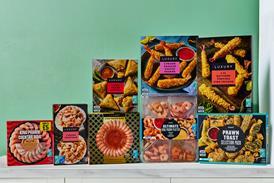


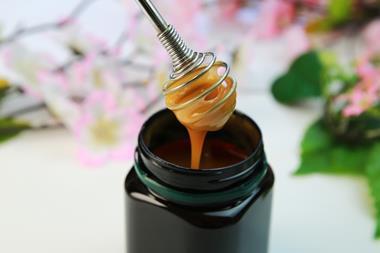
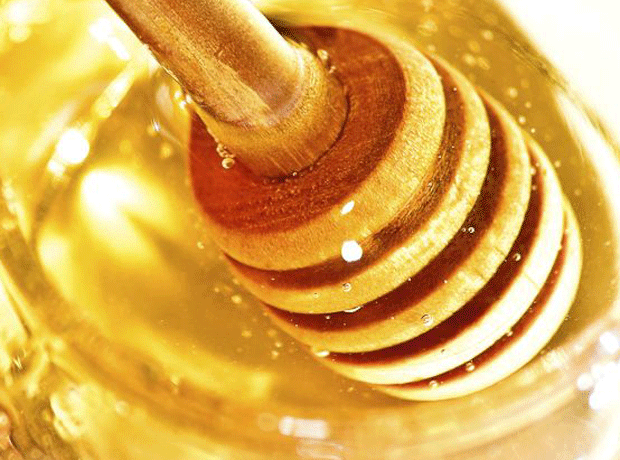


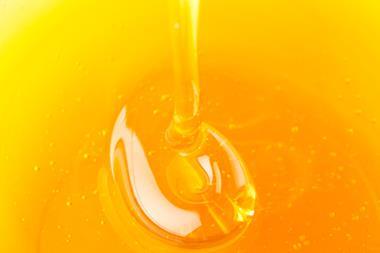

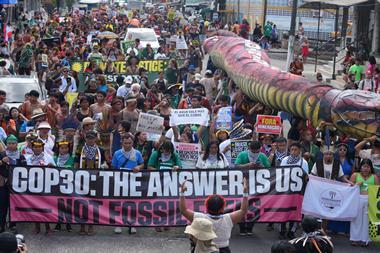




No comments yet